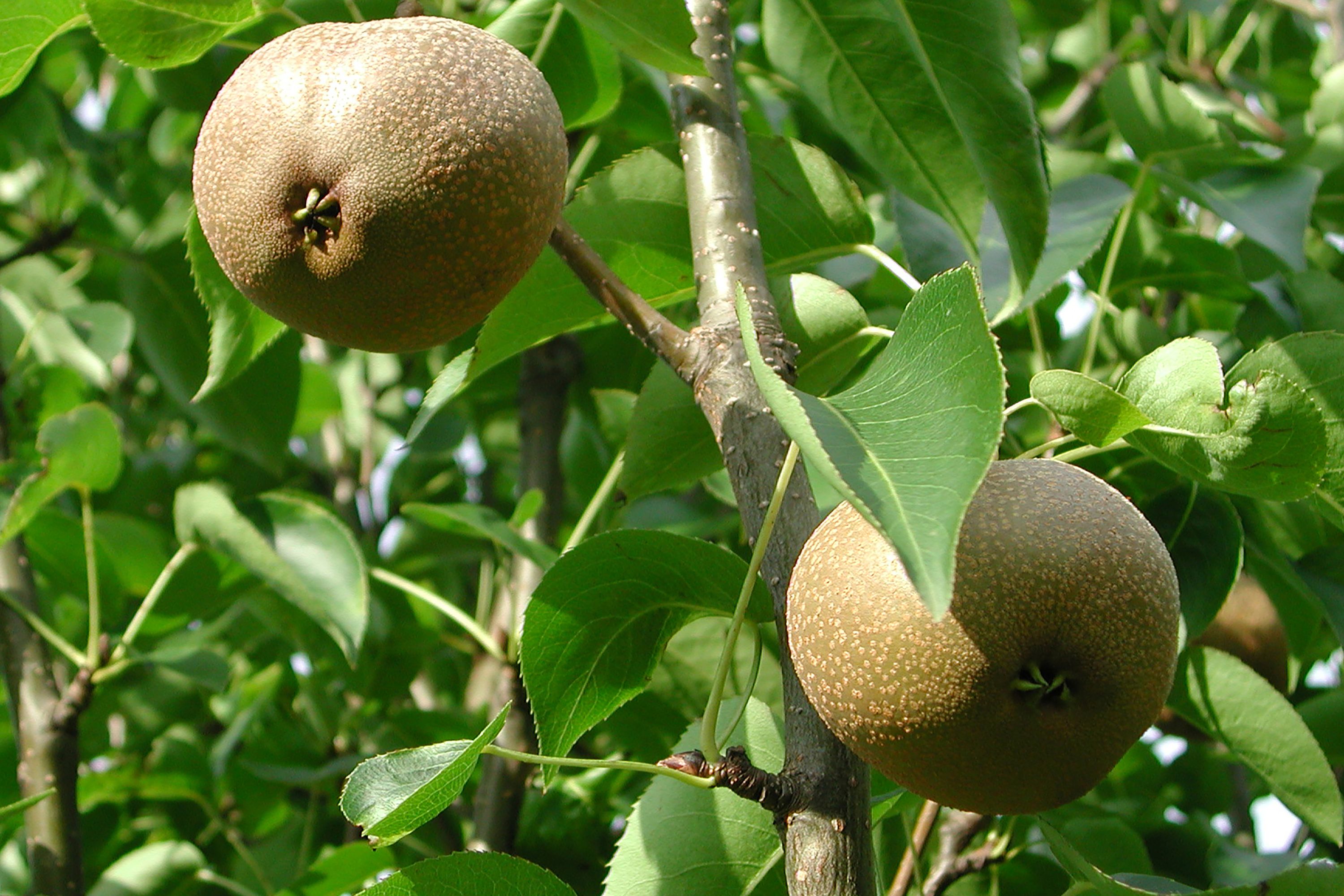Asian pear
(Pyrus pyrifolia)

Description
Pyrus pyrifolia is a species of pear tree native to East Asia. The tree's edible fruit is known by many names, including: Asian pear, Japanese pear, Chinese pear, Korean pear, Taiwanese pear, apple pear, zodiac pear, three-halves pear, papple, naspati and sand pear. Along with cultivars of P. × bretschneideri and P. ussuriensis, the fruit is also called the nashi pear. Cultivars derived from Pyrus pyrifolia are grown throughout East Asia, and in other countries such as India, Nepal, Australia, New Zealand, and the United States (e.g., California). Traditionally in East Asia the tree's flowers are a popular symbol of early spring, and it is a common sight in gardens and the countryside. The fruits are not generally baked in pies or made into jams because they have a high water content and a crisp, grainy texture, very different from the European varieties. They are commonly served raw and peeled. The fruit tends to be quite large and fragrant, and when carefully wrapped (it has a tendency to bruise because of its juiciness), it can last for several weeks or more in a cold, dry place. Due to their relatively high price and the large size of the fruit of cultivars, the pears tend to be served to guests, given as gifts, or eaten together in a family setting. In cooking, ground pears are used in vinegar- or soy sauce-based sauces as a sweetener, instead of sugar. They are also used when marinating meat, especially beef, with a notable example being in the Korean dish bulgogi, due to the presence of enzymes to tenderize the proteins in the meat. In Australia, these pears were first introduced into commercial production beginning in 1980. In Japan, fruit is harvested in Chiba, Ibaraki, Tottori, Fukushima, Tochigi, Nagano, Niigata, Saitama and other prefectures, except Okinawa. Nashi may be used as a late Autumn kigo, or "season word", when writing haiku. Nashi no hana (pear flower) is also used as a kigo of spring. At least one city (Kamagaya-Shi, Chiba Prefecture) has the flowers of this tree as an official city flower. In Nepal (Nepali: Naspati) and the Himalayan states of India, they are cultivated as a cash crop in the Middle Hills between about 1,500 and 2,500 metres (5,000 and 8,000 ft) in elevation, where the climate is suitable. The fruit are carried to nearby markets by human porters or, increasingly, by truck, but not for long distances because they bruise easily.
Taxonomic tree:







